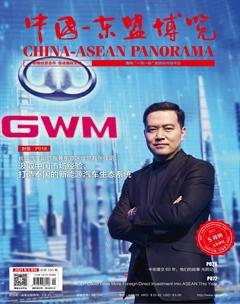RCEP助推东盟投资增长
莎朗·塞
受新冠肺炎疫情影响,东盟的外商直接投资减少了约1/3,大华银行的一份报告显示,《区域全面经济伙伴关系协定》(RCEP)有望成为东盟经济增长的新动力。
联合国贸易和发展会议(贸发会议)一项数据显示,2020年,东盟的外商直接投资为1070亿美元(约合7027亿元人民币),降低了31%;全球平均降幅更大,达到42%。
尽管贸发会议警示,2021年的外商直接投资仍可能保持在较低水平,但大华银行研究主管全德健认为,不少RCEP国家的经济情况长期优于其他地区,RCEP有望成为推动东盟经济复苏的催化剂。
RCEP涵盖东盟10国、中国、日本、韩国、澳大利亚和新西兰,成员国人口占世界人口1/3,GDP总量占世界GDP的29%。在贸易规模上,比美墨加协议和欧盟都要大。
全德健表示,在RCEP地区采用协调的原产地规则,能让成员国有更多的机会进行供应链转移,实现供应链多样化。在新冠肺炎疫情和中美关系等不确定因素的影响下,这些优势显得尤为重要。
不仅如此,他还指出,对于RCEP协定外的国家来说,面向RCEP成员国生产、出口也颇具吸引力,尤其是东盟和中国这样的新兴市场,吸引力更加明显。
在外商投资方面,全德健表示,近年来,RCEP俨然已成为各国主要的投资目的地之一。究其原因,在于RCEP拥有庞大的经济体量,其成员国经济发展处在不同阶段,成本结构和资源禀赋也不尽相同,有利于形成优势互补。2020年,RCEP的外商投资占全球总量的37%,遥遥领先其他贸易组织。
贸发会议也指出,RCEP也深度融入全球价值链,占世界全球价值链贸易额的26%。
全德健认为,RCEP的全球价值链主要集中在中国,以及日本和韩国等老牌中心,这为越南、柬埔寨等周边国家的贸易与投资创造了空间。他还指出,全球价值链与外商直接投资密切相关,RCEP内的五大全球价值链产业吸引了总价值超过半数的绿地投资(建立国际独资或合资企业)项目。
“RCEP是近年来主要的投资目的地之一,在自贸协定生效后,它的地位将进一步得到巩固。”全德健如是说,“不仅如此,RCEP深度融入全球价值链,中国正实行国内外双循环战略,东盟的人口和收入都在增长,这些因素也将成为吸引更多投资流入RCEP,特别是东盟国家的主要动力。”
但东盟国家2020年吸引投资的表现则是几家欢喜几家愁。菲律宾、越南、印尼表现较好,马来西亚和泰国外商投资则有所下滑。尽管菲律宾称其受到了2020年疫情的冲击,遭遇了有史以来最严重的经济衰退,但外商直接投资仍然增长了29%。
越南因对新冠肺炎疫情得当的控制,加上供应链和基础设施的迁移,外商投资下降较少。
印尼的外商投资则“相对温和地”下降了24%,为180亿美元。全德健认为,印尼努力达到了2020的投资增长目标,外商投资前景光明。
东盟国家中,马来西亚和泰国则遭遇了东盟最严重的外商投资缩减。
马来西亚外商投资减少,部分原因在于政治环境不稳定和疫情期间人员流动限制。“但在2020年前三季度,马来西亚审批通过的投资超过了1000亿林吉特(约合1583亿元人民币),尤其是制造业审批通过的投资数额增长强劲。一旦得到落实,这些项目将为马来西亚今后吸引投资铺平道路。”
而根据联合国贸发会议,泰国外商投资缩减归因于一家外资连锁超市2020年年内被泰国投资集团撤资。全德健表示,由于此前泰国在外商投资方面一直相对落后于其他国家,泰國的投资前景并不特别乐观。“吸引投资的激烈竞争仍将持续数年,泰国的未来充满了挑战。”他补充道。
由于疫情和国际经济形势低迷,新加坡的外商投资缩减了37%,共580亿美元(约合3809亿元人民币),超过了东盟整体降比。贸发会议表示,这在很大程度上源于新加坡的跨境并购锐减了86%,外资收购也有所放缓。全德健表示“尽管如此,新加坡的外商投资前景依然乐观,区域经济有望在2021年回升,凸显了新加坡作为局部投资窗口的区位优势。”
他还指出,新加坡在2020年吸引到了127亿美元(约合834亿元人民币)的固定投资,这是自2008年以来的最大数额。新加坡的下一目标是实现制造业增长50%,以便为其在中期实现约20%的经济产出奠定基础。
全德健表示:“如同企业迁移和供应链再配置一样,加入RCEP将是后疫情时代经济增长的又一催化剂。”
·来源:《财经时报》
·编译:谢宗鸣
The Regional Comprehensive Economic Partnership (RCEP) could provide the next impetus for growth in ASEAN, which attracted about one third less foreign direct investment (FDI) on the back of the COVID-19 pandemic, says a report by UOB.
FDI in ASEAN fell by 31% to US$ 107 billion in 2020; globally, the drop was worse — 42%, going by data from the United Nations Conference on Trade and Development (UNCTAD).
Although UNCTAD has warned that FDI is expected to remain weak this year, UOBs Head of Research Suan Teck Kin believes the RCEP will be another catalyst for ASEANs prospects ahead, given that the region has historically outperformed other regions.
RCEP is a trade deal that includes the 10 members of ASEAN, plus China, Japan, South Korea, Australia and New Zealand. The members account for nearly a third of the worlds population and 29% of global gross domestic product. The trade grouping is bigger than both the US-Mexico-Canada Agreement and the European Union.
The adoption of harmonized rules of origin in the zone will allow ample opportunities for the shifting and diversification of supply chains within the grouping, especially in light of the COVID-19 pandemic and uncertainty in US-China relations, said Mr Suan.
It is also attractive for countries that are not involved in the free-trade agreement (FTA) to produce and export to RCEP members, he added, especially to the emerging markets in ASEAN and China.
In terms of FDI inflows, RCEP as a grouping has become a main investment destination in recent years due to the size of its economy, as well as a range of countries at varying stages of economic development; the member countries also have different cost structures and resource endowments, he said. FDI inflows into RCEP accounted for 37% of global FDI inflows in 2020, well ahead of other groupings.
RCEP is also highly integrated into the global value chains (GVC), accounting for 26% of the worlds GVC trade volume, UNCTAD noted.
GVC in RCEP is centred on large and established hubs such as China, Japan, and South Korea, giving room for trade and investment opportunities for peripheral countries such as Vietnam and Cambodia, said Mr Suan. He noted that GVC patterns are closely connected to FDI patterns, with the top five GVC industries in RCEP absorbing more than half the value of greenfield investment project announcements.
“With RCEP the leading destination for global FDI inflows in recent years, this position is likely to be entrenched further once the FTA goes into force. In addition, the regions deep-rooted GVC participation, Chinas dual-circulation strategy and ASEANs rising population and income will also be the main drivers for further investments into the region and ASEAN,” said Mr Suan.
This comes even though performance in the past year was uneven within the region. The Philippines, Vietnam and Indonesia performed relatively better, while Malaysia and Thailand suffered sharper declines in FDI inflows, he noted. The Philippines was the lone exception in the region, with a 29% growth in FDI inflows in 2020 despite the pandemic, and even as the country reported its worst recession on record, he said.
FDI inflows to Vietnam fell more moderately, as the country was able to control the pandemic for the most part, he said. The relocation of supply chains and infrastructure investments also helped to sustain inflows.
Inflows into Indonesia fell by a “relatively mild 24%” to US$ 18 billion. Mr Suan said the outlook for FDI inflows is promising since the country managed to achieve its overall investment targets in 2020.
Malaysia and Thailand logged the worst decline in FDI inflows in ASEAN.
In Malaysias case, it was partly due to political uncertainty and movement restrictions due to the pandemic. “However, with investment approvals in the first nine months of 2020 exceeding RM 100 billion (US$ 33.1 billion), particularly with strong gains in investment approvals in the manufacturing sector, the actualization of these approvals should pave the way for further inflows in 2021 and beyond,” said Mr Suan.
Thailands performance was attributed to a divestment of a foreign-owned supermarket chain to a Thai investor group during the year, UNCTAD reported. Mr Suan said he was less bullish about Thailand, given that its FDI performance has historically lagged its peers by “a wide margin”. “The outlook for Thailand could be challenging as competition for investment is likely to remain fierce in the years ahead”, he said.
Singapores FDI inflows contracted by 37% to US$ 58 billion, worse than the overall rate for ASEAN, as a result of the pandemic and a slump in business activities globally. This was largely due to an 86% plunge in cross-border mergers and acquisitions, as foreign acquisitions slowed in the region, said UNCTAD.
“Nevertheless, the outlook for Singapores FDI inflows remains positive, as regional economies are expected to see a growth rebound in 2021, which would be favourable to Singapores role as an investment funnel to the region,” said Mr Suan.
He noted that Singapore managed to attract US$ 12.7 billion in fixed-asset investments in 2020, the largest amount since 2008.
In addition, the city-state is planning to grow its manufacturing by 50% over the next target so that the sector continues to contribute about 20% to economic output over the medium term.
“The signing of RCEP will be another catalyst just as companies relocate and reconfigure supply chains in a post-pandemic world,” said Mr Suan.
· Source: Business Times

